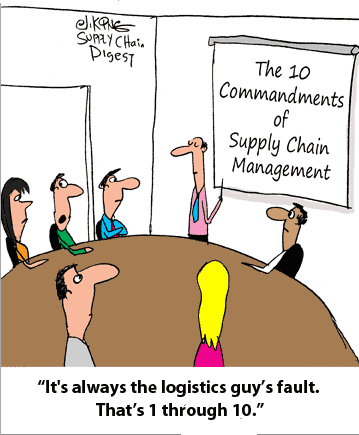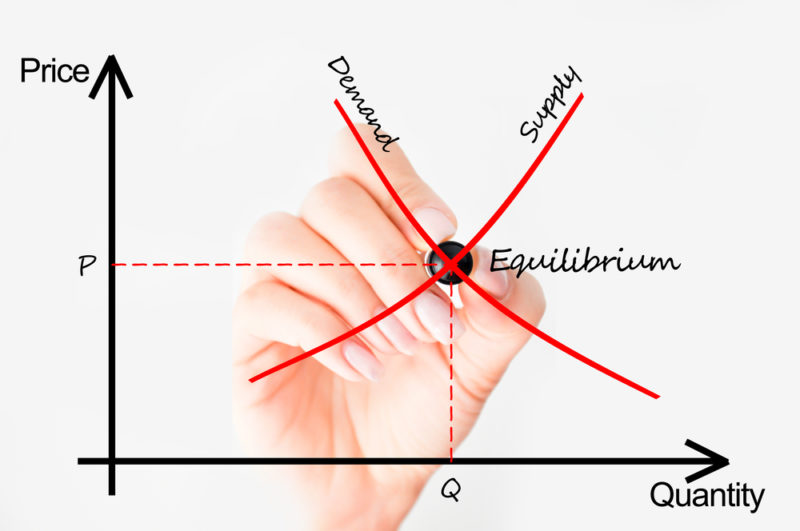A new study by the SupplyChainDigest analyzing the main components of working capital: Days Sales Outstanding (DSO), Days Inventory Outstanding (DIO), and Days Payables Outstanding (DPO) revealed an uptick in DIO. This and much more, in your Monday supply chain briefing from Arkieva.
Subscribe and follow #SupplyChainScope on Twitter and Facebook for updates.
Supply Chain News
Sustainable Freight Action Plan for California is estimated to Improve Freight Efficiency by 25% in 2030
The Sustainable Freight Action plan released by California governor Jerry Brown outlines a long-term 2050 vision and guiding principles for California’s future freight transportation system.
Targets for 2030 Include:
- Improve freight system efficiency 25 percent by 2030.
- Deploy over 100,000 zero-emission vehicles/equipment and maximize near-zero
by 2020.
- Foster future economic growth within the freight and goods movement industry.
“The plan also identifies opportunities to leverage State freight transport system investments, pinpoints actions to initiate over the next five years to meet goals, and lists possible pilot projects to achieve concrete progress in the near term. Among the new additions to the final plan are placing more focus on key partnerships and a discussion of toxic hot spots. Changes have also been made throughout the document to clarify and emphasize the collaboration between the responsible agencies and other regional planning efforts, including funding.”
California Sustainable Freight Action Plan
New Study Shows a Rise in US Company Inventories
SupplyChainDigest benchmark study of about 100 companies reveals an increase in US company inventories since the recession.
“In the US economy, overall inventory levels have been ticking up in recent years. As seen in the chart below from the Commerce Dept., the “inventory to sales” ratio (inventory levels divided by a month’s worth of sales) spiked in late 2008/early 2009 as the recession caught companies with way more inventory than needed versus suddenly shrinking demand. But most companies cut away at that inventory ruthlessly, so that inventory was back on the longer term trend line by early 2010.”
Source: Commerce Dept
Source: SupplyChainDigest
Supply Chain Strategy
Is Integrated Supply Chain Planning Rubbish?
Supply Chain Analyst, Lora Cecere, takes a look at what it to implement a fully integrated supply chain planning process.
“Many projects at companies like Amgen, Cargill, Coca-Cola, J&J, Hershey, Kellogg, Nike, NCR, and PepsiCo fail one, two, or even three times before they understand the basics. For most, the goal of a fully functional integrated planning project is inspirational.
Let’s start with a definition. What is integrated planning? I find five common definitions:
- Tight Integration of Transactional and Planning Data. A focus on the movement of data into and out of the engines from Enterprise Resource Planning (ERP).
- Sales & Operations Planning/Integrated Business Planning (IBP). Process integration with finance to evaluate mix, cost, and volume to determine the most profitable plan. Companies with a deep focus on Sales and Operations Planning (S&OP) will often default to this definition.”
Source: Supply Chain Shaman
How General Motors Spun Gold Out of a Supply Chain Disaster
In 2011 Japan’s earthquake and tsunami amidst the loss of lives brought many worldwide production plants in Japan to a standstill. Years later in 2016, General Motors has implemented measures to make the company more equipped to handle disasters.
“For automotive giant General Motors, it meant production of some of its models in the U.S. and elsewhere was halted when the parts flow from Japan was interrupted. It quickly became apparent that GM, as well as other OEMs with worldwide operations and a supply base in Japan, was not as prepared to handle the disaster it should have been.
But GM did not take the hard lessons learned standing still. Its supply chain management team reviewed what went wrong, and more importantly, how it could better prepare for unforeseen disasters around the world where the automotive giant has production.
The end result was that when another earthquake struck Japan in April 2016, GM was much better prepared. Production output did suffer, but operations resumed at a much faster pace than they did in 2011.”
Source: EBN
Global Supply Chain Management: Is Your Supply Chain Susceptible to The Butterfly Effect?
Manufacturers, with interdependent global supply chains, are faced with the challenge of employing effective global risk management strategies that encompass a full view of both external and internal risk factors.
Seemingly small (and unconnected) events can have large consequences. Scientists describe this as the butterfly effect. The most common (and probably an oversimplified) example cited is that butterfly flapping its wings in Africa can cause a hurricane in Europe. Read more on the butterfly effect here.
Now think about your supply chain (and your business): Where are your customers? Are they all over the world? Or in a few continents? Or in a few countries? Or in a few cities? Or in your neighborhood?
How about your suppliers? Where are they located? Do you supply particular products, overall; are your suppliers well distributed across the world?
Source: Arkieva Supply Chain Blog
How to Get Started with Improving Your Supply Chain Processes Today!
Naturally, it’s easy to wait until something is broken before fixing it. For manufacturing companies looking to stay ahead of the curve in today’s highly competitive marketplace, the culture of continuous improvement is highly critical.
While most manufacturing businesses might agree on the fact that they need to have a supply chain improvement process in place, with the aim of – continuously cutting unnecessary costs, improving productivity while improving customer satisfaction – getting started on the other hand, usually gets pushed to the bottom of the to-do list.
An essential part of process improvement starts with aligning business goals with clear measurable metrics that can prove success or show areas that need improvement.
Source: Arkieva Supply Chain Blog
Supply Chain Wit:
10 Commandments of Supply Chain Management

Source: SupplyChainDigest



